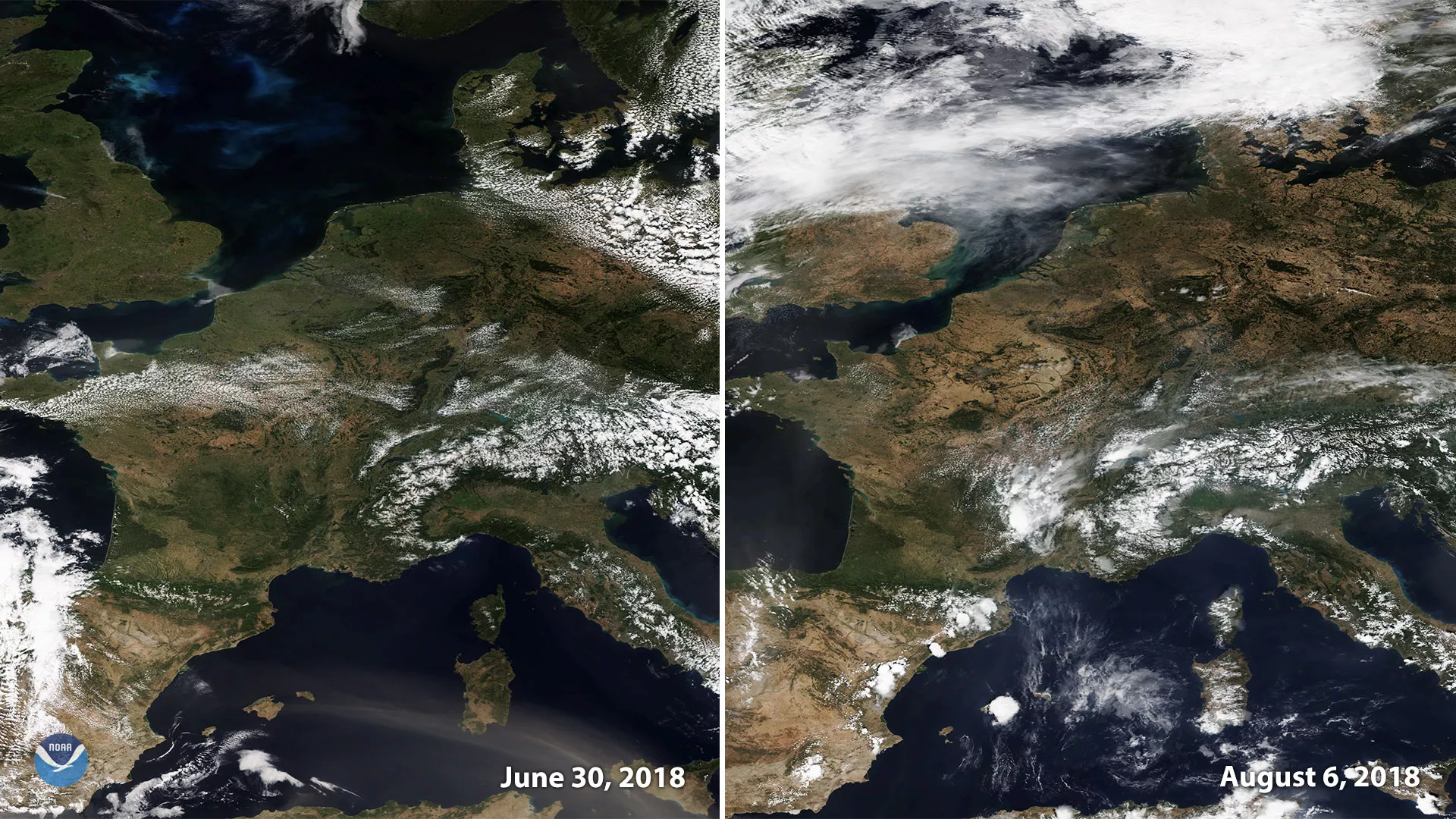
Historic heat has baked much of Europe this summer, turning the landscape from green to brown in little over a month. These two images, captured by the NOAA-20 satellite's VIIRS instrument on June 30 and August 6, show the browning of western Europe after several weeks of hot, dry weather. The drought is noticeable in England, northern France, and Germany, where many farmers are facing one of the worst droughts in decades.
Since late spring, a persistent area of high pressure has been parked over the continent. The jet stream – the river of atmospheric winds flowing west to east that drive Europe's weather – has been positioned farther north than usual, blocking the normal progression of weather systems that deliver clouds and rain.
The persistent heat has set numerous records from the Iberian Peninsula to Scandinavia. In Norway and Finland, temperatures have reached 90 degrees (32°C) north of the Arctic Circle, while the Netherlands recorded its driest July on record. Southern Europe has also sweltered under hot conditions. Temperatures have climbed to 113 degrees (45°C) in Portugal and Spain, while in Greece, hot, dry weather helped ignite the country's deadliest wildfires in more than a decade.
Europe's scorching summer comes on the heels of an unusually warm spring for many of the same areas. Germany, for example, saw its warmest and driest April-July period since 1881, with temperatures averaging 6.5°F (3.6°C) above normal across the country. As Earth's climate warms, scientists expect heat waves similar to this summer's to become more common in the coming decades.
